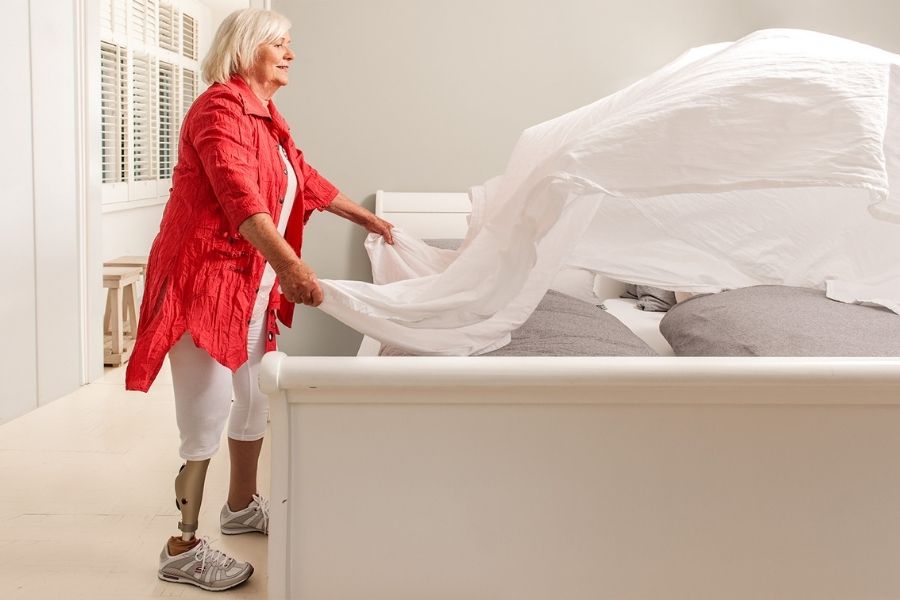4 tips for better sleep with an amputation
Sleep is incredibly important. Your muscles relax, your mind comes to rest and your body recovers. If a good night’s sleep sounds like the stuff of dreams to you, check out our four tips to get better sleep.
Please note: we are not doctors. Therefore, the content on our website is not intended to be a substitute for professional medical advice. Always consult your physician with medical questions and never ignore professional medical advice.
1. Do some bedtime stretches
Stretching your body improves your blood flow and relaxes your muscles. Getting some light exercise before you go to bed will also slow down your breathing, and as you relax more, you’ll sleep better.
The free Fitness for Amputees App by Ottobock contains various exercises specifically for amputees. There are three modules, including ‘Stretch & Relax’, which consists of several exercises that will help you unwind.
2. Take a shower before going to bed
A nice hot shower before bedtime works wonders. One thing to remember though, is that timing is key. In the evening, your body starts to cool down, triggering the production of melatonin, a hormone that makes you sleepy. To boost this effect, the best thing to do is to take a hot shower 90 minutes before you plan on going to bed. Your body will cool down even faster, making you even sleepier. Showering just before bedtime will disrupt the cooling process in your body, so make sure to take your shower at the right time.
In the shower, your residual limb can swell due to the heat, which can make it more difficult to don your artificial limb. So there’s another reason to take your morning shower in the evening instead!

3. Prevent cramps
Does your residual limb tend to cramp up at night? You can prevent this just as you would prevent any other cramps. That means drinking plenty of water during the day and eating high-potassium foods, such as citrus fruits, bananas, kiwis, potatoes, meat and fish. This will allow your strained muscles to strengthen and relax. Gently giving your residual limb a quick massage before bedtime can also help prevent cramps.
If, despite taking these precautions, your residual limb still keeps you up at night, consider taking an ibuprofen or going to bed with a heat pad.
Note: always consult with your doctor before taking any medication.
4. Be careful with pillows
If you had an above-the-knee amputation, don't sleep with a pillow between your legs. This can actually stretch the muscles on the inside of your upper leg, while shortening the muscles on the outside, with the resulting imbalance affecting your posture.
If you had an above-the-knee amputation, it’s best to avoid sleeping with a pillow under your residual limb, too, because the pillow will increase the angle of your hip while you’re asleep. This will make it more difficult to stretch your hip the next day.
Extra tip
After waking up from a good night’s sleep, put on your artificial limb immediately while you’re still in bed. Once you sit up or stand upright, more blood will flow to your extremities, causing your residual limb to swell. If you don’t wait too long to put on your artificial limb, you’ll find the process a whole lot easier and more comfortable.